Photography Basics is the art, science, and practice of creating durable images by recording light or other electromagnetic radiation. Whether you are using a high-end DSLR, a smartphone, or a vintage film camera, the principles of photography remain the same. Understanding these fundamentals can significantly enhance your ability to take compelling photographs. This guide explores the basics of photography, covering topics such as equipment, exposure, composition, and post-processing.
Buy from Amazon > Softbox Photography Lighting Kit, 16” x 16” Professional Softbox Lighting Kit with 85W 3000-7500K LED Bulbs, Studio Lights for Photography/Video Recording/Live Streaming
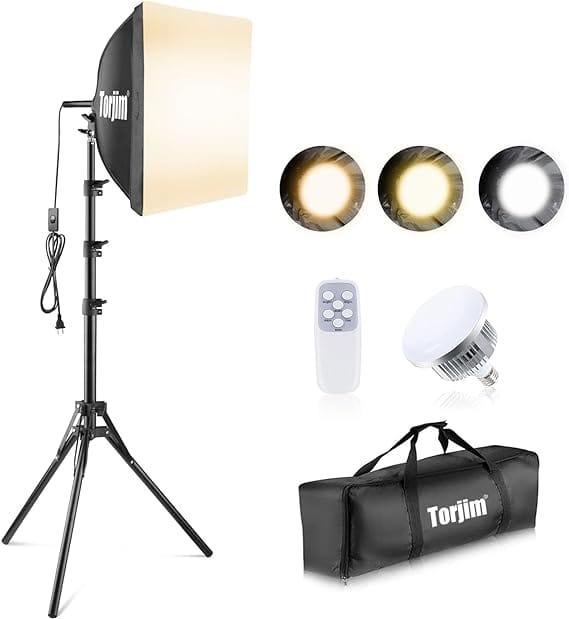
1. Photography Basic: The Camera and Equipment
- DSLRs and Mirrorless Cameras: These cameras offer high-quality images, interchangeable lenses, and manual controls. They are ideal for professionals and enthusiasts.
- Point-and-Shoot Cameras: Compact and easy to use, these cameras are great for casual photography.
- Smartphone Cameras: Modern smartphones boast advanced features, making them a convenient tool for everyday photography.
- Film Cameras: Though less common today, film cameras offer a unique aesthetic and are still favored by some photographers.
Buy from Amazon > 75.8″ Monopod with Feet, Professional Aluminum Monopod for Cameras, Compact Travel Monopod with Quick Release Plate, Max Load 33lbs, Compatible with Sony Canon Nikon DSLR Camera, AM-404FL+QC-55
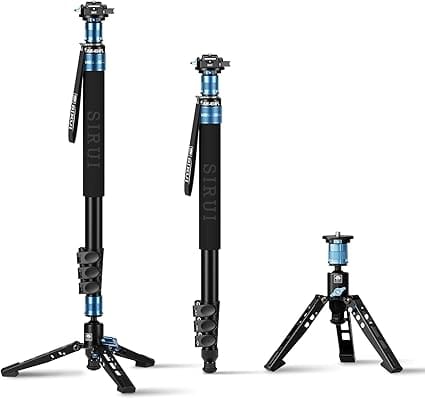
Photography Basics: Essential Accessories
- Lenses: The choice of lens significantly impacts your photos. Common types include prime lenses (fixed focal length), zoom lenses (variable focal length), wide-angle lenses, and telephoto lenses.
- Tripod: Useful for stabilizing your camera, especially in low-light conditions or when shooting long exposures.
- Filters: These include UV filters, polarizers, and neutral density filters, each serving specific purposes.
- Memory Cards: Ensure you have enough storage for your photos, especially during extended shoots.
- Lighting Equipment: External flashes, reflectors, and diffusers can help you control and manipulate light.
Buy from Amazon > Backdrop Stand 10x7ft(WxH) Photo Studio Adjustable Background Stand Support Kit with 2 Crossbars, 8 Backdrop Clamps, 2 Sandbags and Carrying Bag for Parties Events Decoration
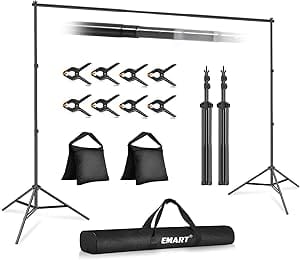
2. Understanding Exposure
Exposure determines how light or dark an image appears. It is controlled by three primary settings, collectively known as the “exposure triangle”: aperture, shutter speed, and ISO.
Buy from Amazon > Camera Bag, Camera Backpack, DSLR SLR Camera Case Fits 13.3 Inch Laptop, Waterproof Photography Backpacks with Rain Cover Tripod Holder for Women Men
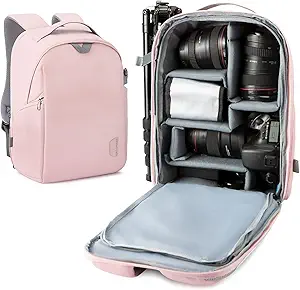
Aperture
Aperture refers to the opening in the lens that allows light to enter. It is measured in f-stops (e.g., f/2.8, f/5.6). A lower f-stop number (e.g., f/2.8) means a wider aperture, allowing more light and creating a shallow depth of field. This is ideal for portraits. A higher f-stop (e.g., f/16) means a narrower aperture, resulting in more of the scene being in focus, which is suitable for landscapes.
Buy from Amazon > Canon EOS R6 Mark II Mirrorless Camera RF24-105mm F4 L USM Lens Kit, Hybrid Full-Frame Camera, 24.2 Megapixel CMOS Sensor. Photo and Video Camera Capabilities, RF Mount
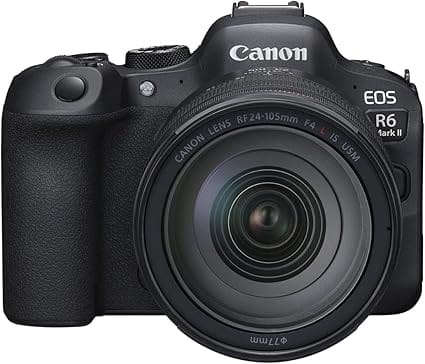
Shutter Speed
Shutter speed is the duration the camera’s shutter remains open to expose the sensor to light. It is measured in seconds or fractions of a second (e.g., 1/1000, 1/60). Faster shutter speeds freeze motion, while slower shutter speeds can create motion blur or capture light trails.
ISO
ISO measures the camera sensor’s sensitivity to light. A lower ISO (e.g., 100) produces clean images with minimal noise, while a higher ISO (e.g., 3200) increases sensitivity but introduces grain or noise. Adjust ISO based on lighting conditions and your desired effect.
3. Composition
Composition is the arrangement of elements within a photograph. Good composition can transform an ordinary scene into a captivating image.
Rule of Thirds
Divide your frame into a 3×3 grid. Place your subject along the gridlines or at the intersections for a balanced and visually appealing composition.
Leading Lines
Use natural lines in the scene, such as roads, rivers, or fences, to guide the viewer’s eye toward the subject.
Framing
Use elements like windows, arches, or branches to frame your subject, adding depth and focus to the image.
Symmetry and Patterns
Symmetrical compositions and repeating patterns can create striking and harmonious images.
Depth
Create a sense of depth by including foreground, middle ground, and background elements in your photo. This technique is particularly effective in landscapes.
Negative Space
Leave empty space around your subject to draw attention to it and create a minimalist look.
4. Lighting
Light is the most critical element in photography. Understanding and manipulating light can dramatically affect the outcome of your photos.
Natural Light
- Golden Hour: The hour after sunrise and before sunset provides soft, warm light ideal for photography.
- Blue Hour: The period just after sunset or before sunrise offers cool, diffused light, perfect for moody shots.
- Midday Light: Harsh and direct, midday light can create strong shadows but can be softened with diffusers or reflectors.
Artificial Light
- Continuous Light: Used in studios, this light source remains constant, allowing you to see the effect in real-time.
- Flash: Useful for freezing motion or filling in shadows.
- LEDs and Light Panels: Compact and versatile, they are great for video and still photography.
5. Post-Processing
Editing is an integral part of photography that allows you to refine your images. While it’s essential to aim for the best possible shot in-camera, post-processing can enhance your work.
Basic Adjustments
- Exposure and Contrast: Fine-tune the brightness and contrast to enhance details.
- White Balance: Adjust the color temperature to ensure accurate tones.
- Sharpness and Clarity: Enhance details while avoiding over-processing.
Advanced Techniques
- Cropping and Straightening: Improve composition by removing distractions or aligning horizons.
- Color Grading: Modify the colors to set the mood or match a specific style.
- Retouching: Remove blemishes or unwanted objects to clean up the image.
Editing Software
Popular options include Adobe Lightroom, Photoshop, Capture One, and free alternatives like GIMP or Snapseed.
6. Types of Photography
Portrait Photography
Focuses on capturing the essence and personality of a subject. Use a wide aperture for a pleasing background blur.
Landscape Photography
Showcases natural or urban environments. A narrow aperture and a tripod are often necessary for sharpness and depth.
Street Photography
Captures candid moments in public spaces. It often requires quick reflexes and a discreet approach.
Macro Photography
Explores the tiny details of small subjects like insects or flowers. A macro lens and precise focusing are crucial.
Wildlife Photography
Documents animals in their natural habitats. Patience, a telephoto lens, and understanding animal behavior are key.
Sports Photography
Freezes fast-paced action. Use a fast shutter speed and continuous shooting mode.
Astrophotography
Captures celestial objects like stars and galaxies. A sturdy tripod, long exposures, and dark skies are essential.
7. Common Mistakes and How to Avoid Them
- Blurry Images: Ensure proper focus and use a tripod if necessary.
- Overexposed or Underexposed Photos: Master the exposure triangle and check the histogram.
- Poor Composition: Practice framing your shots and apply compositional rules.
- Ignoring Light: Pay attention to the quality and direction of light.
- Overediting: Aim for a natural look and avoid excessive adjustments.
8. Developing Your Style
As you practice, you’ll begin to discover your unique photographic style. Experiment with different genres, techniques, and equipment. Analyze the work of other photographers for inspiration, but strive to create something that reflects your perspective.
9. Practicing Photography
- Shoot Regularly: The more you practice, the more your skills will improve.
- Experiment: Try new techniques, angles, and subjects.
- Review and Reflect: Analyze your photos to identify strengths and areas for improvement.
- Seek Feedback: Share your work with others and learn from constructive criticism.
Photography’s Most Sold Products: A Comprehensive Overview
Photography is a captivating art form and an essential medium for capturing memories, telling stories, and sharing perspectives. As the photography industry continues to grow, so does the demand for products that cater to professionals, hobbyists, and enthusiasts alike. This guide explores the most sold photography products, shedding light on why they remain in high demand and their importance in creating stunning visuals.
Cameras: The Heart of Photography
1. DSLR Cameras Digital Single-Lens Reflex (DSLR) cameras are among the most popular choices for professional and amateur photographers. These cameras offer excellent image quality, versatility, and manual controls. Leading brands like Canon and Nikon have dominated this segment with models such as the Canon EOS 5D Mark IV and Nikon D850. Their popularity stems from:
- Superior image quality
- Interchangeable lenses
- Reliable performance in various lighting conditions
2. Mirrorless Cameras Mirrorless cameras are increasingly outselling DSLRs due to their compact size, advanced features, and comparable image quality. Sony’s Alpha series, Fujifilm’s X-T models, and Canon’s EOS R series are top contenders. These cameras appeal to photographers seeking:
- Lightweight designs
- Fast autofocus systems
- Excellent video recording capabilities
3. Point-and-Shoot Cameras Despite the prevalence of smartphone photography, point-and-shoot cameras remain a staple for casual photographers. Their ease of use and portability make models like the Sony RX100 and Canon PowerShot G7 X popular.
Lenses: Expanding Creative Possibilities
Lenses are indispensable tools that dramatically influence the outcome of a photograph. Some of the most sold lenses include:
1. Standard Prime Lenses Prime lenses like the 50mm f/1.8 are known for their sharpness and ability to capture high-quality images in low-light conditions. They’re favorites among portrait and street photographers.
2. Zoom Lenses Zoom lenses, such as the 24-70mm f/2.8, are versatile for a variety of shooting scenarios. They’re ideal for event photography, landscapes, and portraits.
3. Telephoto Lenses Telephoto lenses like the 70-200mm f/2.8 are popular among wildlife and sports photographers for their ability to capture distant subjects with clarity.
4. Wide-Angle Lenses Wide-angle lenses, such as the 16-35mm f/4, are essential for landscape, architectural, and interior photography. They offer a broad field of view, allowing photographers to capture expansive scenes.
Tripods: Stability for Sharp Images
Tripods are essential accessories for photographers who require stability for long exposures, landscape photography, or studio work. Popular choices include:
- Manfrotto Befree Advanced: Compact and travel-friendly
- Gitzo Series 2 Mountaineer: Designed for professional use
- Joby GorillaPod: Versatile for unconventional angles
Lighting Equipment: Perfecting Illumination
Lighting plays a crucial role in photography, and many sold products cater to enhancing or manipulating light effectively. These include:
1. Speedlights Portable and powerful, speedlights like the Canon Speedlite 600EX II-RT and Nikon SB-5000 are highly favored for event and portrait photography.
2. Continuous Lights Continuous lighting setups, such as LED panels, are popular for both photography and videography. Brands like Neewer and Godox offer affordable and reliable options.
3. Studio Strobes Studio strobes, such as the Profoto B10, are essential for high-end studio photography, delivering consistent and powerful light.
4. Light Modifiers Softboxes, umbrellas, and reflectors are frequently purchased to shape light effectively. These tools help photographers control the quality and direction of light for professional results.
Storage Solutions: Safeguarding Precious Memories
Reliable storage is critical for photographers who need to manage large volumes of high-resolution images. Popular products include:
1. Memory Cards Brands like SanDisk and Lexar produce fast and durable memory cards. SD cards, CFExpress, and XQD cards are common formats depending on camera compatibility.
2. External Hard Drives Portable drives from Western Digital and Seagate are popular for their capacity and durability, ensuring photographers can back up their work safely.
3. Cloud Storage Services Services like Dropbox, Google Drive, and Adobe Creative Cloud are widely used for secure and accessible online storage.
Editing Tools: Bringing Photos to Life
Photo editing is an integral part of the creative process. Tools and software that are consistently in demand include:
1. Adobe Lightroom and Photoshop These industry-standard programs are indispensable for post-processing. Photographers rely on their robust features for retouching, color correction, and advanced compositing.
2. Graphics Tablets Tablets like the Wacom Intuos and Huion Kamvas make precise editing easier, offering pressure-sensitive controls and a natural drawing experience.
Camera Bags and Straps: Protecting and Transporting Gear
Photographers need practical and durable solutions to carry their gear safely. Popular products include:
1. Camera Backpacks Backpacks like the Lowepro ProTactic BP 450 AW II offer ample space, customizable compartments, and weather-resistant materials.
2. Messenger Bags Compact options like the Peak Design Everyday Messenger are favored for urban and travel photography.
3. Camera Straps Comfortable and stylish straps, such as those from BlackRapid and Peak Design, are among the most sold accessories.
Drones: Expanding Perspectives
Drones have revolutionized photography by offering unique aerial views. Popular models include:
1. DJI Mavic Series The DJI Mavic Air 2 and Mavic 3 are top-selling drones known for their high-resolution cameras and user-friendly features.
2. Autel Robotics EVO Series These drones appeal to professionals seeking alternatives to DJI with comparable performance.
Accessories: Enhancing the Photography Experience
Accessories that boost convenience and functionality are perennial best-sellers:
1. Filters Neutral density (ND) filters, polarizers, and UV filters are must-haves for managing reflections, glare, and exposure.
2. Battery Grips and Spare Batteries Photographers often invest in additional power solutions to ensure uninterrupted shooting.
3. Remote Shutters Wireless and wired remotes allow for precise control over long exposures and self-portraits.
Photography: Capturing the Essence of Moments
Photography, the art and science of capturing light to create lasting images, is a universal medium of storytelling. It transcends cultures, languages, and boundaries, offering people a way to document, express, and share their experiences. Since its invention in the early 19th century, photography has evolved dramatically, from rudimentary chemical processes to advanced digital technologies, shaping how humanity sees and remembers the world.
The Origin of Photography
The history of photography dates back centuries, with the earliest experiments involving pinhole cameras and camera obscuras. These rudimentary devices laid the groundwork for modern cameras by demonstrating how light could project an image onto a surface. In 1826, French inventor Nicéphore Niépce created the first permanent photograph using a process called heliography. Louis Daguerre, Niépce’s collaborator, later developed the daguerreotype process in 1839, marking the official birth of practical photography.
Types of Photography
Photography encompasses a vast range of styles and techniques, each suited to different purposes and preferences. Some of the most prominent types include:
- Landscape Photography
Capturing the grandeur of natural scenery, landscape photography emphasizes the beauty of the environment. From sweeping mountain ranges to serene seascapes, this genre often uses wide-angle lenses to emphasize the vastness of a scene. - Portrait Photography
Focusing on people, portrait photography seeks to capture the essence, personality, and emotions of its subjects. Lighting, composition, and expression play crucial roles in making a portrait impactful. - Wildlife Photography
This challenging genre involves photographing animals in their natural habitats. Wildlife photographers require patience, skill, and sometimes specialized equipment to capture elusive or fast-moving subjects. - Street Photography
Documenting candid moments in urban environments, street photography reflects the spontaneity and diversity of human life. This genre thrives on storytelling, using the mundane and extraordinary to create compelling visuals. - Macro Photography
Macro photography focuses on extreme close-ups, revealing details often invisible to the naked eye. It’s commonly used to photograph insects, flowers, or intricate textures. - Photojournalism
Serving as a visual record of events, photojournalism plays a pivotal role in storytelling. Whether covering political movements, humanitarian crises, or daily news, it strives to present an unvarnished view of reality. - Architectural Photography
This genre captures the aesthetics of buildings, bridges, and urban landscapes. It combines technical precision with creative angles to highlight the design and function of structures. - Fashion Photography
Focused on clothing and style, fashion photography is integral to advertising and editorial work. It often emphasizes creativity, glamour, and artistic expression. - Sports Photography
Capturing the intensity and dynamism of athletic events, sports photography requires quick reflexes and the ability to anticipate action. - Astrophotography
Dedicated to photographing celestial objects like stars, planets, and galaxies, astrophotography combines science and artistry. Long exposures and advanced techniques are essential in this field.
The Evolution of Equipment
Photography has undergone a technological revolution, with equipment evolving from bulky, complex apparatuses to sleek, user-friendly devices. Early photographers relied on large-format cameras with glass plates and chemical processes, which were cumbersome and time-consuming.
The 20th century saw the introduction of roll film and compact cameras, making photography accessible to the masses. Brands like Kodak and Leica played pivotal roles in popularizing photography. The arrival of digital photography in the late 20th century marked a seismic shift, allowing instant image capture, editing, and sharing.
Today, cameras range from professional-grade DSLRs and mirrorless systems to smartphone cameras that fit in a pocket. Advanced features like autofocus, high dynamic range (HDR), and artificial intelligence (AI) enhance the photographer’s ability to create stunning images effortlessly.

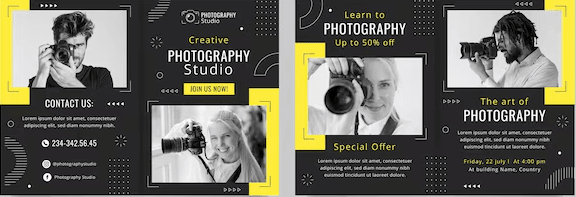
2 comments
Can you be more specific about the content of your article? After reading it, I still have some doubts. Hope you can help me.
Hello, Of course. How can I help you?
Regards!